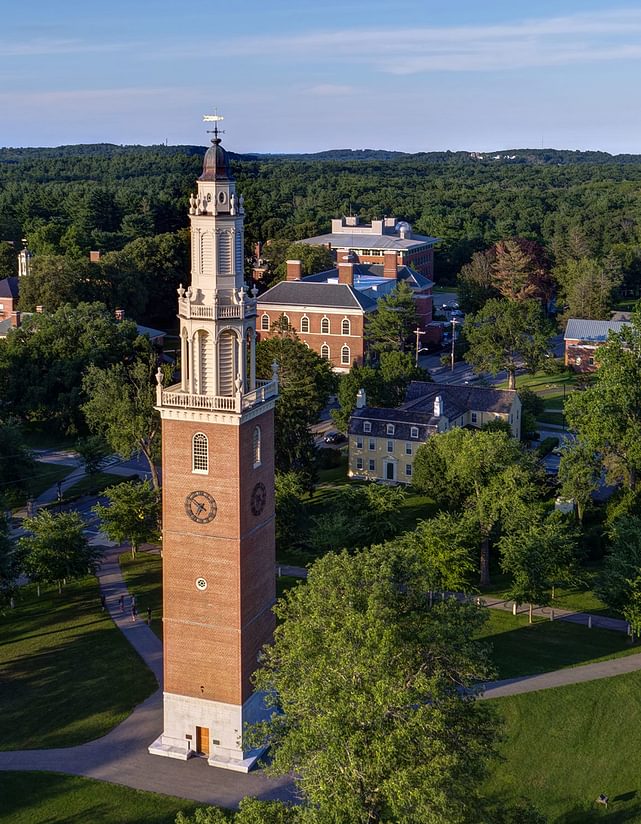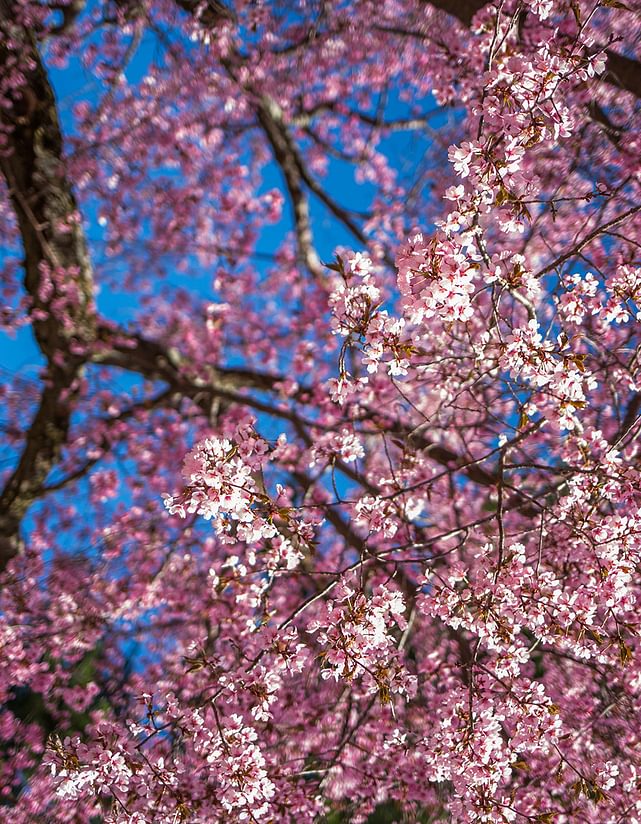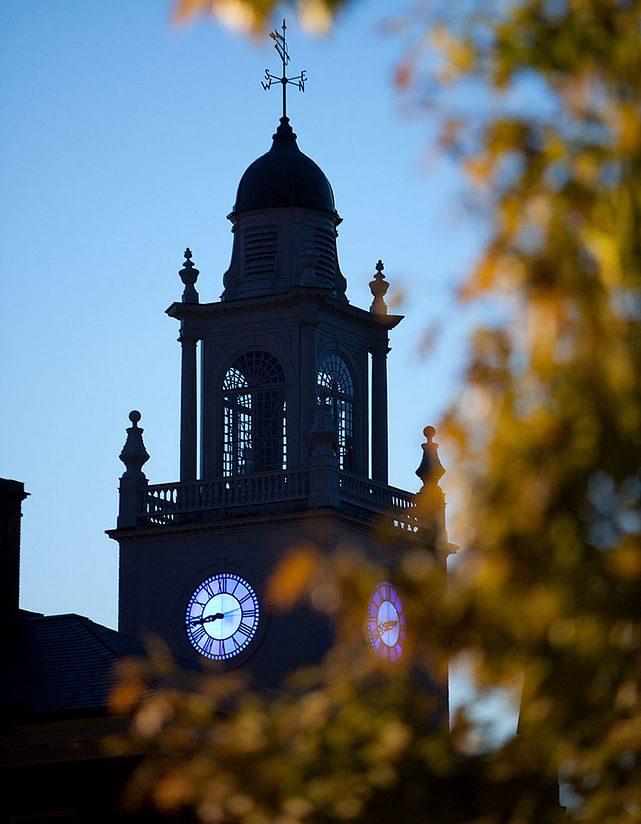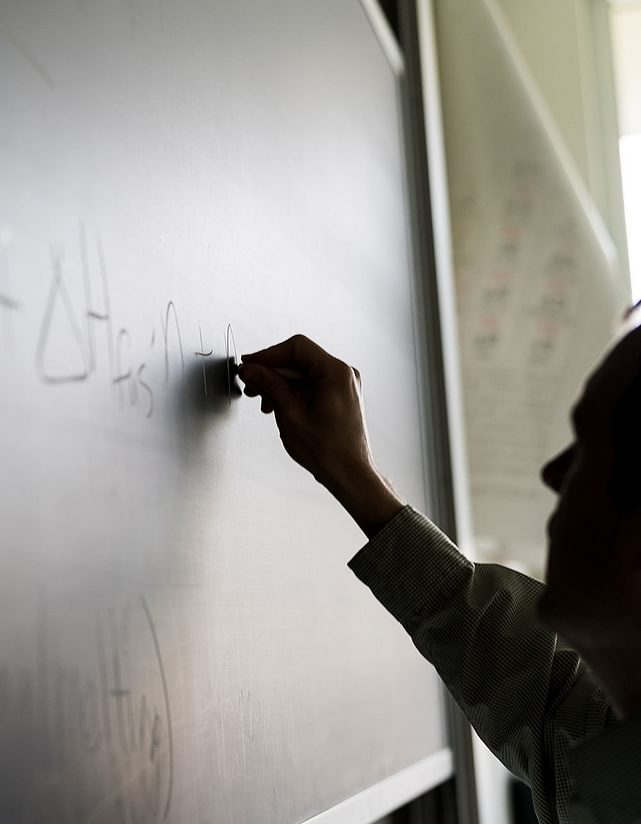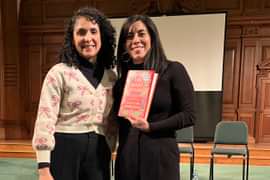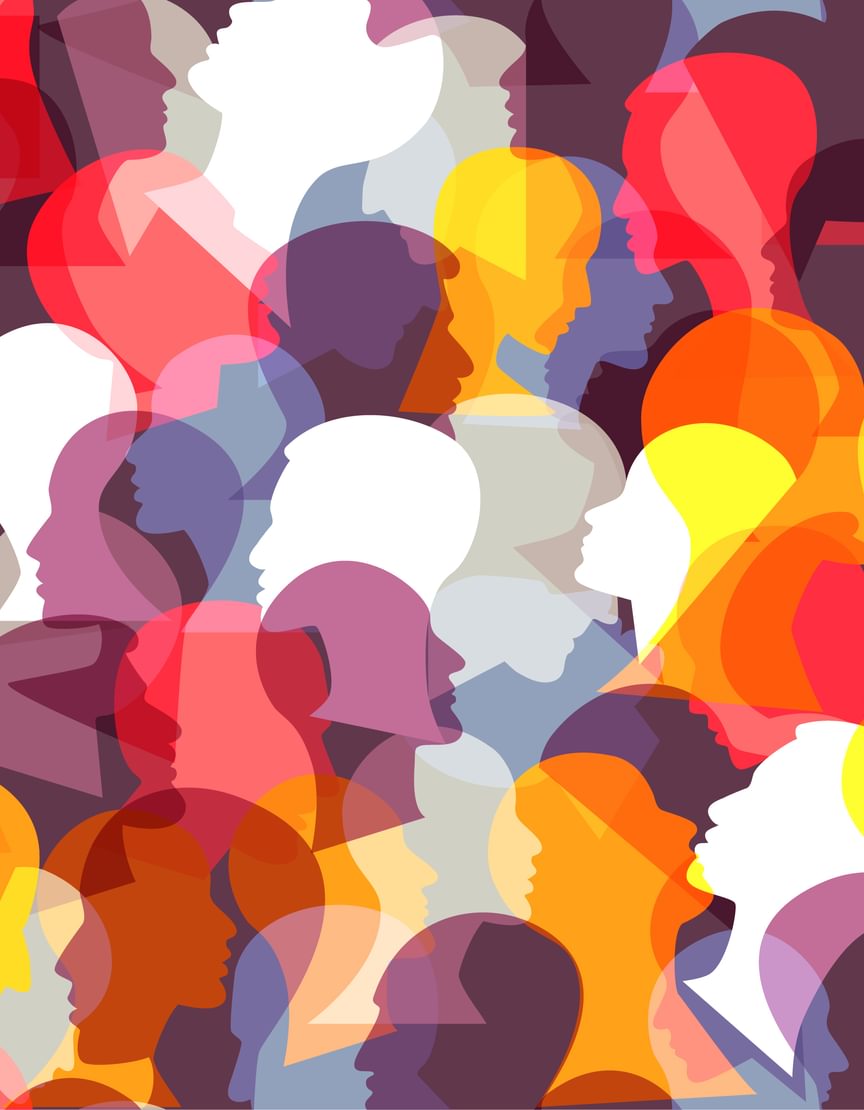
December 17, 2024
In good faith
How the chaplaincy builds bridges across beliefsby Rita Savard
More than a third of American high schoolers report no religious affiliation. Given the odds, you might expect activity around the Academy’s chaplains’ offices to be pretty dull these days.
On the contrary.
“Many of the students showing up to Mass each week have no religious background,” says Dr. Mary Kantor, PA’s Catholic chaplain. “But whether our students identify with religious traditions or not, they are all seeking to share common human experiences, and they all have a need for conversation and support around what it means to be a good human and live an ethical life.”
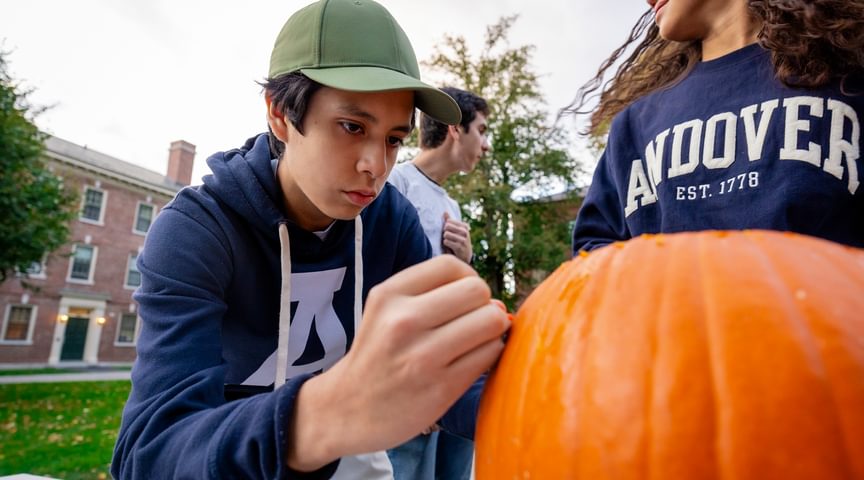
On a crisp October evening, dozens of students crowded around tables in front of Paresky Commons to carve pumpkins. Sounds of laughter marked the welcome break from studies as a menagerie of glowing, gap-toothed grins took over the lawn. The event, which coincided with the Jewish holiday of Sukkot—a festival dating to ancient Israel that celebrates the harvest—was emblematic of the chaplains’ work on campus to create experiences for all.
For nearly 50 years, the Andover chaplaincy has championed the importance of discourse, dialogue, and above all, community. The Academy’s faith leaders are aware of perceptions that school and religion don’t always go together. Surveys from the Pew Research Center, a nonpartisan think tank based in Washington, D.C., have consistently shown a rise in religious “nones” among students—those who consider themselves unaffiliated with a religion. But with education and training in crisis intervention, grief counseling, and mental and emotional health needs, chaplains play an outsize role on campus, touching hundreds of students’ lives.
“Looking back at the ’70s, when the Academy started an interfaith ministry, or looking around campus today, young people—no matter if they are religious or not—are the same in the sense that they are all trying to figure out their place in the world,” Kantor says, adding that virtual learning during the pandemic created an uptick of students and families seeking out religious and spiritual services. “For many students, Andover is their first exposure to different perspectives, and interfaith is simply about being able to be present with other humans. We don’t need to agree on everything in order to extend friendship and cooperation. With that goal in mind, we work to meet students where they are in the moment and provide safe spaces where they can come together and ask questions. In these moments—when students realize they are not alone, that their voices matter—they build skills, sensitivities, and awarenesses that will benefit them and prepare them for a diverse world.”
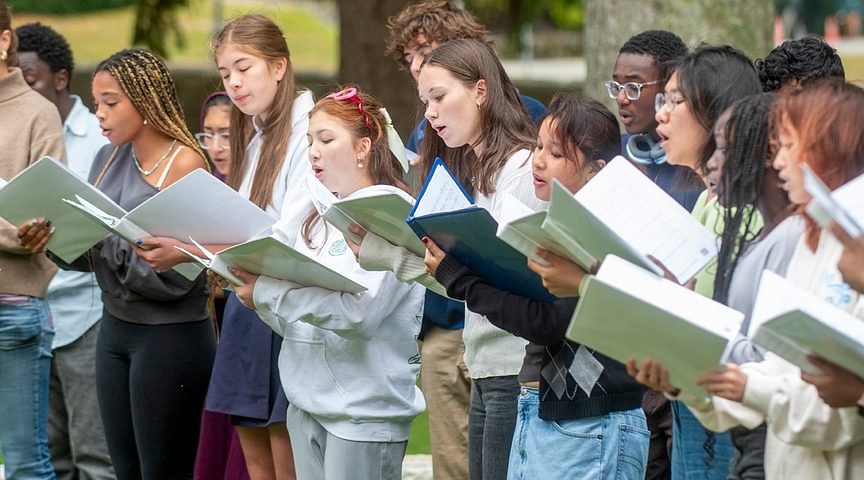
Community & Connection
Growing up, Tamar Gendler ’83 didn’t realize her family might be “different.” But a series of unique lifestyle choices soon made the obvious hard to ignore.
In the 1970s, while her friends’ brothers were fighting in the Vietnam War, Gendler’s parents were protesting it. Other families had television sets as fixtures in their living rooms. The Gendlers brought theirs out only to watch President Richard Nixon resign, then promptly put it away. Other kids’ lunches didn’t consist of food that was grown in their backyard. Other kids didn’t have a compost heap. Or solar panels. Or gathered monthly for lunar celebrations.
Her father, Rabbi Everett Gendler, who passed in 2022, is widely referred to as the founder of the Jewish environmental movement.
“When my dad joined the faculty at Andover, I came to realize how special he was,” recalls Tamar Gendler, who is currently dean of the faculty of Arts and Sciences at Yale University. “Sure, I had seen him at our synagogue doing things like leading services, paying condolence calls, and blessing babies. But those were interactions with grownups who cared. Andover showed me that he was admired by the most intimidating people imaginable—teenagers—whom my elementary–school–self viewed as figures of heroic proportion.”
The 1970s was a time of transformation across the nation and Andover was changing along with it. Abbot Academy and Phillips Academy merged in 1973 to form a coeducational school and, two years prior, PA faculty voted to no longer require chapel attendance. But the absence of religion altogether would eventually prove problematic for an ever-broadening student population from around the world, as students far away from home for the first time were seeking connections to familiar traditions and life perspectives.
To meet student needs, in 1976 Andover’s first interfaith chaplaincy was born, bringing Jewish, Protestant, and Catholic chaplains together to offer something more malleable—educators who were also faith leaders, trained to work both in and outside of religious institutions. Their mission was to support the community and present a vision of how the world works when diverse traditions focus on how to be good humans and neighbors.
Arriving at Andover in 1977 with his wife, Mary, and daughters Tamar and Naomi ’86, Rabbi Gendler was initially hired as a six-month fill-in; he ended up staying for 19 years. He taught philosophy, non-Western religions, and served as an advisor to both Jewish and Muslim students.
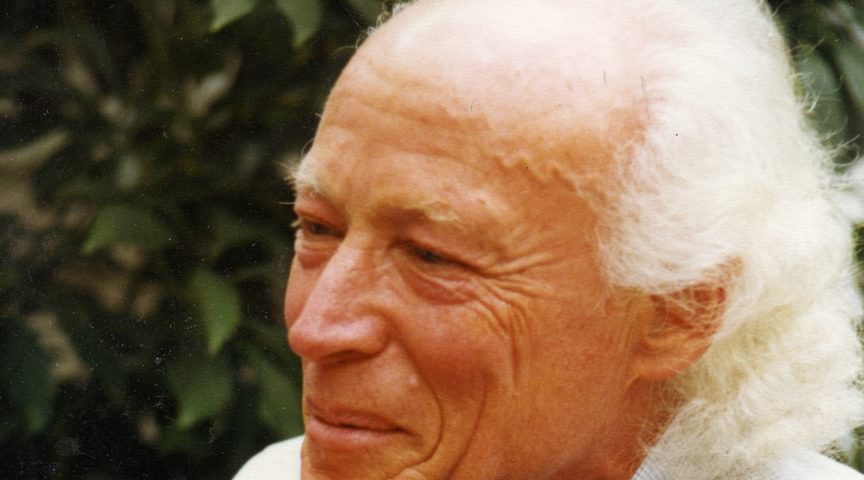
Students who also described themselves as “unaffiliated” or “nonreligious” sought the rabbi out as a mentor and friend. Gendler came to describe the diverse interactions and connections across beliefs as “small sharings,” and they became the building blocks for interfaith partnerships at the Academy.
“Sometimes we don’t know what we need in the moment because life is full of unexpected twists and turns,” says Jana Paley ’81, who, along with Joe Tatelbaum ’78, led the initiative to create the new Gendler Peace Circle adjacent to Cochran Chapel. “In moments of grief and celebration, how people show up for us makes an imprint.”
In her third week of freshman year at Amherst College, Paley’s father died. Returning to her family in Florida felt like the longest day of her life.
“When I finally walked into the house, the phone rang,” she says. “It was Rabbi Gendler.”
Gendler believed in grapevines, and Andover’s grapevine worked well. Students had informed Gendler of Paley’s loss and he quickly sprang into action. When she returned to Massachusetts for college, Paley was surprised—and deeply moved—to be met on the jetway by Gendler and a few dozen students he gathered to support her.
The legacy of the first interfaith chaplains—including Catholic chaplain and English instructor Tom Hennigan, and Protestant chaplain and English instructor Phillip Zaeder P’79, ’83, GP’17, ’18—is one of forging and nurturing intentional relationships across campus. And that legacy continues today.
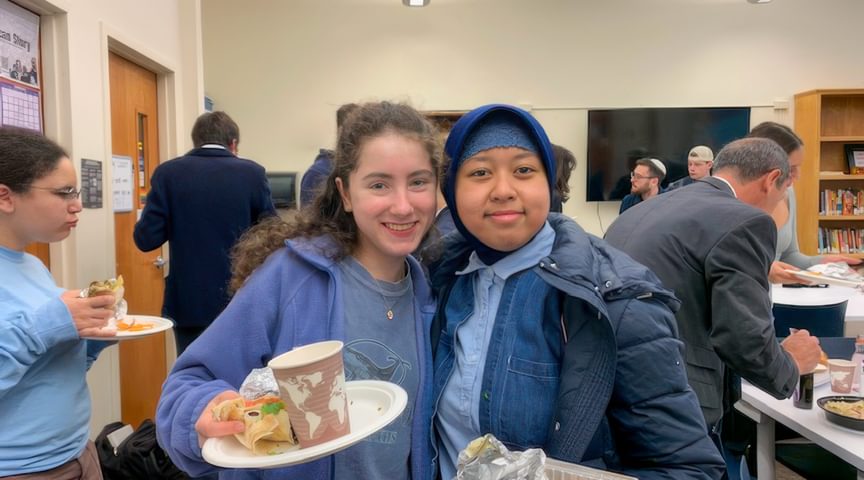
Social-Educational Exchange
Andover’s interdisciplinary Identity class, established in 2016, explores topics of race, gender, mental health, and sexuality. This year, for the first time, nearly half the students chose to keep “faith and spirituality” as a core part of their identity in an introductory exercise.
“Some don’t choose faith, and some aren’t affiliated with any religion,” explains Linda Carter Griffith, associate head of school for equity, inclusion, and wellness and the co-director of the Identity class. “We respect each person’s individuality. Faith is below the iceberg—it’s not immediately visible in people. But for those who consider it part of their core identity, it plays a big role in their wellness and growth. Kids have to be their whole selves to thrive under the rigors of Andover, and that is why the chaplaincy’s interfaith work is an important part of campus life. It’s critical that we offer support and the ability to connect around different belief systems.”
Throughout the year, the chaplaincy provides students with opportunities to learn from and about each other’s beliefs through dinners, guest speakers, and community engagement projects. By creating these spaces, interfaith leaders help make Andover a place where all students feel welcome.
“The interfaith theme is valid and inviting, especially in today’s world where people of different religious beliefs are often divided and pitted against one another,” says Mayen Etuk ’26, co-president of the Catholic Student Fellowship. “When we get together, no matter how different we are or how much our traditions vary, it’s the conversation that matters. Kindness, hospitality, and an openness to learning are values we all share.”
Muslim student leaders on campus are at the forefront of interfaith initiatives, advocating for open and respectful conversations, says Noureddine El Alam, instructor in mathematics, statistics, and computer science and advisor to the Muslim Student Association. Muslim students, he explains, emphasize the importance of dialogue in understanding and respecting the beliefs and practices of other religions.
“No matter which faith you’re practicing,” says El Alam, “it plays a huge part in building a school that aims to educate the whole child. Islam, for instance, is a rational belief system, not based on blind faith. I think that is one of the misconceptions in people’s minds about faith in general—that it is without rational thought. But to me, to the students I interact with, to the people of many different religions and cultures from around the world whom I meet at Andover, faith is rooted in empathy, curiosity, respect, gratitude, diversity, equity, and inclusion. Faith, from the Islamic perspective, is rational by design and the values it teaches align with Andover’s pillars of excellence. We don’t have to decide to be a person of faith or a person of intellect; these mindsets can coexist.”
Campus conversations around equity, inclusion, and belonging include casting spirituality in much broader terms, through a worldview of diversity and faith cooperation.
For example, interfaith dinners between Muslim and Catholic-Christian students began in 2018 when students saw their dormmates fasting for Ramadan, a month of abstaining from food and drink observed by Muslims worldwide.
“Our students are also wonderful teachers,” El Alam says. “The empathy and support they extend to one another is an inspiring example for all to follow.”
Catholic students approached Kantor with a request to create a communal space for Muslim students breaking fast. “It was important to them that their peers knew they were a vital part of the community and that they felt supported,” Kantor says.
“Sharing a table with people who are fundamentally different from you stretches across history and spans many traditions,” adds El Alam. “Fostering peace is a simple but meaningful way to grow into more beautiful, complete, imaginative, and adventurous community members.”
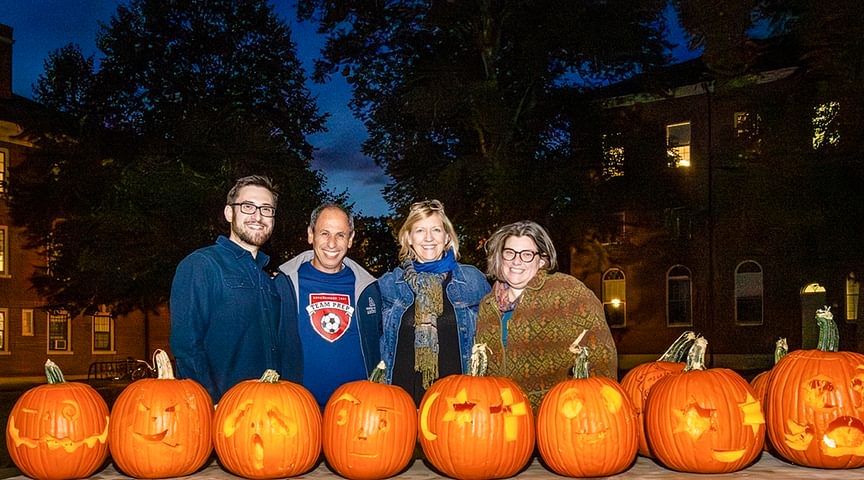
Kindness Comes Full Circle
When she was a new student at Andover, Rev. Gina Finocchiaro ’97, now the Academy’s Protestant chaplain, hadn’t seen interfaith work before.
“Here were three chaplains who really enjoyed working together,” Finocchiaro says. “They cared about each other, and they cared about supporting the whole community. I couldn’t have articulated it then, as a high school student, but in college I heard my call to ministry, and I began to realize I wanted to be a faith leader who builds community and works with people across differences.”
At her first parish job, Finocchiaro says she and the local rabbi got up to some “good holy trouble” together. Those early interfaith relationships helped sharpen her skills in social work, youth services, and grief and crisis counselling, which led to the creation of a vital town-wide “grief curriculum.”
“The kind of community building that grew out of that collective work certainly informs how I show up on campus today,” Finocchiaro says.
In a world fraught with divides across religious and cultural differences, Andover’s interfaith leaders, Griffith observes, are often central to community healing—especially in times of crisis.
Rabbi Joshua Greenberg had just started his first year as Andover’s Jewish chaplain when Hamas attacked Israel on October 7, 2023, killing about 1,200 people and taking over 250 hostages.
“The number of colleagues, alumni, and parents that reached out to me—not only to check on the Jewish Student Union, but also to check on me individually—speaks volumes about the care people hold in their hearts for this institution,” Greenberg wrote in an open reflection on the Academy’s website.
Soon after violence erupted, interfaith leaders united—as they have done in the past during moments of shared grief and trauma, including 9/11 and the Covid-19 pandemic—and sent a collective message to the Andover community. It is often in the darkest moments, Greenberg adds, that light can be found in community coming together. “It can be a powerful salve.”
“I believe that when we learn about the practices of our neighbors, we can actually learn a great deal about ourselves,” Greenberg explains. “At the heart of all religions are common languages we all share—love and serving others, grace and peace, excellence and achievement, growth and learning.”
More than a year later, the ongoing Israel-Hamas war also illustrates the fragility of interfaith diplomacy.
Chaplains may bring their specific takes and individual practices, but “we’re united in wanting to foster helpful conversation around themes that are important for student well-being,” says Kantor, who is working with Rabbi Greenberg to build a new student interfaith coalition—one that centers on students’ relationships with each other, across faiths and across differences. “When it comes to interreligious diplomacy as a force for peace, perseverance in dialogue, however difficult, is the only way forward.”
In February, Andover will join celebrations around the globe marking the United Nations World Interfaith Harmony Week. The event promotes unity among all people, regardless of their faith, and encourages peace, dignity, and equality on a healthy planet. Andover has been participating for a decade.
“What is so beautiful about a place like Andover is the business of relationship building that comes through experiential learning,” adds Finocchiaro, who joined students on a visit to the Auschwitz exhibition in Boston in March. “It was emotional to move through that exhibit, and it was an honor to experience it with a group of Jewish students and to be trusted as an adult in that space as they processed very complicated history emotionally and intellectually. Andover is a place where you can do that with guidance and with respect, and in all the ways we talk about difference.”
